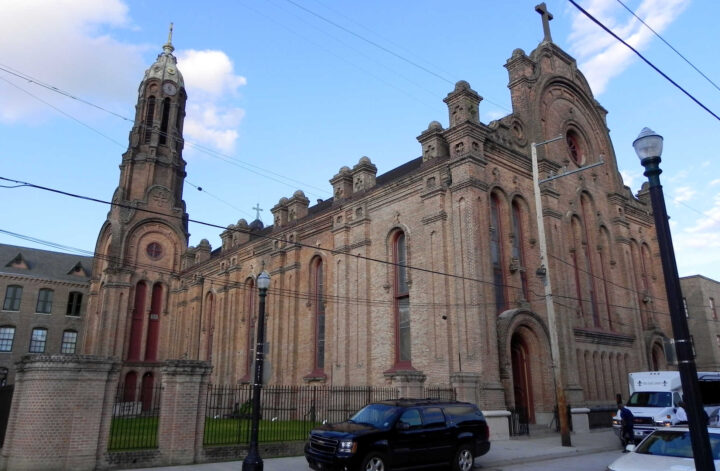A few weeks ago, I had the divine pleasure of attending a wedding at St. Mary’s Assumption Church on Josephine Street. A co-worker and friend whom I’ve known for the past seven years finally tied the knot with his lovely girlfriend, a woman he’d been dating for the past several years. I believe Leigh and Bevin are currently floating around Europe on a cruise ship for their honeymoon – I wish them nothing but the best…
…and the best is how their marriage began. St. Mary’s is the most elaborate, most ornate and most awe-inspiring church I have been in since visiting the cathedrals in Paris many years ago.

Built in 1860, this cathedral was constructed for the overwhelming influx of German immigrants into New Orleans. It is also home to the largest shrine built in dedication to the Blessed Francis Xavier Seelos, a German priest (and missionary) who died while serving the local congregation. While caring for victims of Yellow Fever, Father Seelos contracted the disease and passed away in 1867. Many years later, he was beatified by Pope John Paul II in April of 2000.
Stepping inside and gawking at the soaring ceilings, huge columns, aged wood pews and glorious altar, I felt a strange sense of familiarity. It wasn’t until later while researching the church that I discovered local author, Anne Rice, had actually referred specifically to this church in one of her novels (and my favorite book by her), The Witching Hour. The two main characters in the novel get married at St. Mary’s Assumption and Rice is not shy with colorful detail. No wonder it seemed familiar!

One particular detail (among so very many) that caught my eye was this elaborate pulpit that seemed to hover high above the seated guests. To be completely honest, at first I thought it was simply another column, made more embellished by its proximity to the altar. It wasn’t until one of the speakers climbed the steps behind it and appeared above the colorful statues that I realized its real purpose.
In 1974, St. Mary’s Assumption was dedicated as a National Historic Monument and, as I understand, they often give tours and I think I might just have to check it out. I would love to know more about the cathedral’s history, not to mention the massive organ that dates back to 1861.



